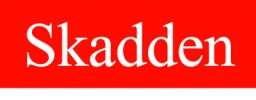On April 22, 2025, Secretary of Health and Human Services Robert F. Kennedy Jr. and Commissioner of the Food and Drug Administration (FDA) Dr. Martin Makary announced that FDA is taking actions to remove petroleum-based dyes from the U.S. food supply. In making the announcement, Secretary Kennedy asserted that the dyes that will be subject to FDA action are responsible for causing a number of chronic illnesses. Secretary Kennedy previously met with leaders of food companies to discuss removing synthetic dyes from their products (see our March 13, 2025, client alert). At the press conference announcing FDA’s new initiative, he referred to FDA’s action plan as a “settlement” with the food industry, and Dr. Makary explained that industry and FDA have an “understanding” regarding food dyes.
FDA’s April 22 announcement committed to the following actions:
- Starting the process to remove authorization for Citrus Red No. 2 and Orange B, which are used to color orange peels and sausage casings, respectively.
- Creating a public timeline for food manufacturers to voluntarily transition from petrochemical-based dyes to natural alternatives, including voluntarily eliminating six synthetic dyes—FD&C Green No. 3, FD&C Red No. 40, FD&C Yellow No. 5, FD&C Yellow No. 6, FD&C Blue No. 1, and FD&C Blue No. 2—from the food supply by the end of 2026.
- Authorizing four new natural color additives that can be used in place of the synthetic dyes.
- Expediting the timeline for companies to remove FD&C Red No. 3 from products. The previous deadline was 2027-2028, but FDA may modify its order to expedite removal.
Although FDA did not specify how it would start the formal removal process for Citrus Red No. 2 and Orange B, it could do so by issuing an order to repeal the regulation authorizing these additives. If FDA issues such an order, affected parties may request an advisory committee to review the order, which would not go into effect until the advisory committee reviews. It is unclear if FDA intends to remove them using the Delaney Clause—the same faster path to removal, not requiring an advisory committee, that it used to support removal of Red Dye No. 3—or if the agency does not anticipate industry pushback due to the limited use of those products.
Petroleum-based dyes have already been banned by certain states. In particular, West Virginia and California have enacted laws banning the use of seven dyes and two preservatives by January 1, 2028: red dyes No. 3 and No. 40, yellow dyes No. 5 and No. 6, blue dyes No. 1 and No. 2, green dye No. 3, butylated hydroxyanisole, and propylparaben in foods served in public schools. Given these state-level bans, companies had already been working to reformulate. However, federal action on an expedited timeline may require more rapid work to find alternative ingredients.
In addition, Secretary Kennedy’s remarks linking food dyes to chronic diseases may increase litigation risk around products utilizing these dyes. The plaintiffs’ bar cheered Kennedy’s appointment as health secretary due to his history as a trial lawyer and willingness to take on big industry players. Secretary Kennedy’s litigation experience appears to be guiding FDA’s strategy to pair strong statements about the safety of petroleum-based food dyes with a public urging to voluntarily remove these dyes from food products. While the administrative process could extend beyond Kennedy’s tenure as secretary, FDA’ s announcement indicates that the agency expects food manufacturers to voluntarily remove these dyes from their products, which would be a faster path to removal and avoid the need for a drawn out administrative process.
At this point, it is clear that FDA intends to encourage food companies to act voluntarily on an expedited basis, and it is possible that companies that do not do so may face increased litigation risk. As such, food companies may wish to consider undertaking the following steps for potentially impacted products:
- Review ingredient lists to determine if any of the dyes named in the recent announcement are in product formulations (FD&C Green No. 3, FD&C Red No. 40, FD&C Yellow No. 5, FD&C Yellow No. 6, FD&C Blue No. 1, and FD&C Blue No. 2, Citrus Red No. 2 and Orange B).
- Review supplier agreements and work with suppliers to assess the availability of alternatives and process for transitioning to new formulations.
- Begin the process of exploring whether it is feasible to reformulate with natural or nonsynthetic dyes.
- Review websites, advertising and other copy to assess the risk of health or nutrition claims made in combination with products containing dyes that may be subject to removal.
- Update packaging and labeling with new ingredients once finalized.
We will continue to monitor for regulatory updates as they unfold in this space.
This memorandum is provided by Skadden, Arps, Slate, Meagher & Flom LLP and its affiliates for educational and informational purposes only and is not intended and should not be construed as legal advice. This memorandum is considered advertising under applicable state laws.

For further information, please contact:
Rachel Turow, Partner, Skadden
rachel.turow@skadden.com





